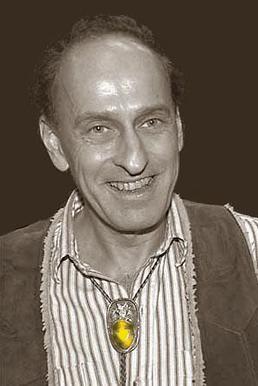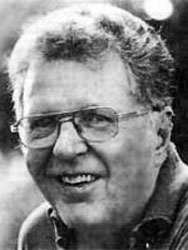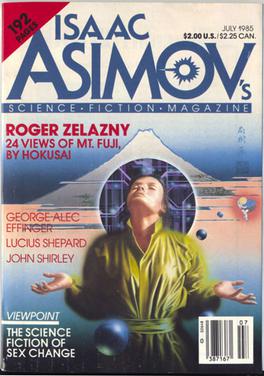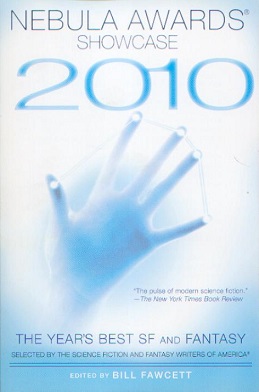
Roger Joseph Zelazny was an American poet and writer of fantasy and science fiction short stories and novels, best known for The Chronicles of Amber. He won the Nebula Award three times and the Hugo Award six times, including two Hugos for novels: the serialized novel ...And Call Me Conrad (1965), subsequently published under the title This Immortal (1966) and then the novel Lord of Light (1967).

Apocalyptic and post-apocalyptic fiction is a subgenre of science fiction in which the Earth's civilization is collapsing or has collapsed. The apocalypse event may be climatic, such as runaway climate change; astronomical, such as an impact event; destructive, such as nuclear holocaust or resource depletion; medical, such as a pandemic, whether natural or human-caused; end time, such as the Last Judgment, Second Coming or Ragnarök; or any other scenario in which the outcome is apocalyptic, such as a zombie apocalypse, cybernetic revolt, technological singularity, dysgenics or alien invasion.

Philip José Farmer was an American author known for his science fiction and fantasy novels and short stories.

John Shirley is an American writer, primarily of fantasy, science fiction, dark street fiction, westerns, and songwriting. He has also written one historical novel, a western about Wyatt Earp, Wyatt in Wichita, and one non-fiction book, Gurdjieff: An Introduction to His Life and Ideas. Shirley has written novels, short stories, TV scripts and screenplays—including The Crow—and has published over 84 books including 10 short-story collections. As a musician, Shirley has fronted his own bands and written lyrics for Blue Öyster Cult and others. His newest novels are Stormland and Axle Bust Creek.

A Boy and His Dog is a cycle of narratives by author Harlan Ellison. The cycle tells the story of an amoral boy (Vic) and his telepathic dog (Blood), who work together as a team to survive in the post-apocalyptic world after a nuclear war. The original 1969 novella was adapted into the 1975 film A Boy and His Dog directed by L.Q. Jones. Both the story and the film were well-received by critics and science fiction fans, but the film was not successful commercially. The original novella was followed by short stories and a graphic novel.

Walter Michael Miller Jr. was an American science fiction writer. His fix-up novel, A Canticle for Leibowitz (1959), the only novel published in his lifetime, won the 1961 Hugo Award for Best Novel. Prior to its publication, he was a writer of short stories.

Jane M. Lindskold is an American writer of fantasy and science fiction short stories and novels.

Deus Irae is a post-apocalyptic science fiction novel started by American author Philip K. Dick and finished with the help of American author Roger Zelazny. It was published in 1976. Deus irae, meaning God of Wrath in Latin, is a play on Dies Irae, meaning Day of Wrath or Judgment Day. This novel was based on Dick's short stories "The Great C" and "Planet for Transients".

Damnation Alley is a 1977 post-apocalyptic film directed by Jack Smight, loosely based on the 1969 novel of the same name by Roger Zelazny. The original music score was composed by Jerry Goldsmith, and the cinematography was by Harry Stradling Jr. Poorly received with critics and audience, it has since achieved a cult following.
"There Will Come Soft Rains" is a science fiction short story by author Ray Bradbury written as a chronicle about a lone house that stands intact in a California city that has otherwise been obliterated by a nuclear bomb, and then is destroyed in a fire caused by a windstorm. The title is from a 1918 poem of the same name by Sara Teasdale that was published during World War I and the Spanish flu pandemic. It was first published in 1950 in two different versions in two separate publications, a one-page short story in Collier's magazine and a chapter of the fix-up novel The Martian Chronicles.

World War III, sometimes abbreviated to WWIII, is a common theme in popular culture. Since the 1940s, countless books, films, and television programmes have used the theme of nuclear weapons and a third global war. The presence of the Soviet Union as an international rival armed with nuclear weapons created persistent fears in the United States and vice versa of a nuclear World War III, and popular culture at the time reflected those fears. The theme was also a way of exploring a range of issues beyond nuclear war in the arts. U.S. historian Spencer R. Weart called nuclear weapons a "symbol for the worst of modernity."
Damnation Alley may refer to:

Hardwired is a 1986 cyberpunk science fiction novel by American writer Walter Jon Williams.

"24 Views of Mt. Fuji, by Hokusai " is a science fiction novella by American writer Roger Zelazny, originally published in the July 1985 issue of the Isaac Asimov's Science Fiction Magazine. It won the Hugo Award for Best Novella in 1986 and was also nominated for the Nebula Award for Best Novella in 1985.
Portrayals of survivalism, and survivalist themes and elements such as survival retreats have been fictionalised in print, film, and electronic media. This genre was especially influenced by the advent of nuclear weapons, and the potential for societal collapse in light of a Cold War nuclear conflagration.

The Nebula Awards #18 is an anthology of science fiction short works edited by American writer Robert Silverberg. It was first published in hardcover by Arbor House in October 1983; a paperback edition with cover art by Gary LoSasso was issued by Bantam Books in September 1984.
This is a partial bibliography of American science fiction and fantasy author Roger Zelazny.

Nebula Award Stories 1965 is an anthology of science fiction short works edited by Damon Knight. It was first published in hardcover by Doubleday in 1966, with a Science Fiction Book Club edition following in October of the same year. The first British edition was published by Gollancz in 1967. Paperback editions followed from Pocket Books in the U.S. in November 1967, and New English Library in the U.K. in April 1969. The U.K. and paperback editions bore the variant title Nebula Award Stories 1. The book was more recently reissued by Stealth Press in hardcover in February 2001. It has also been published in German.

Nebula Awards Showcase 2010 is an anthology of award-winning science fiction short works edited by Bill Fawcett. It was first published in trade paperback by Roc/New American Library in April 2010.














